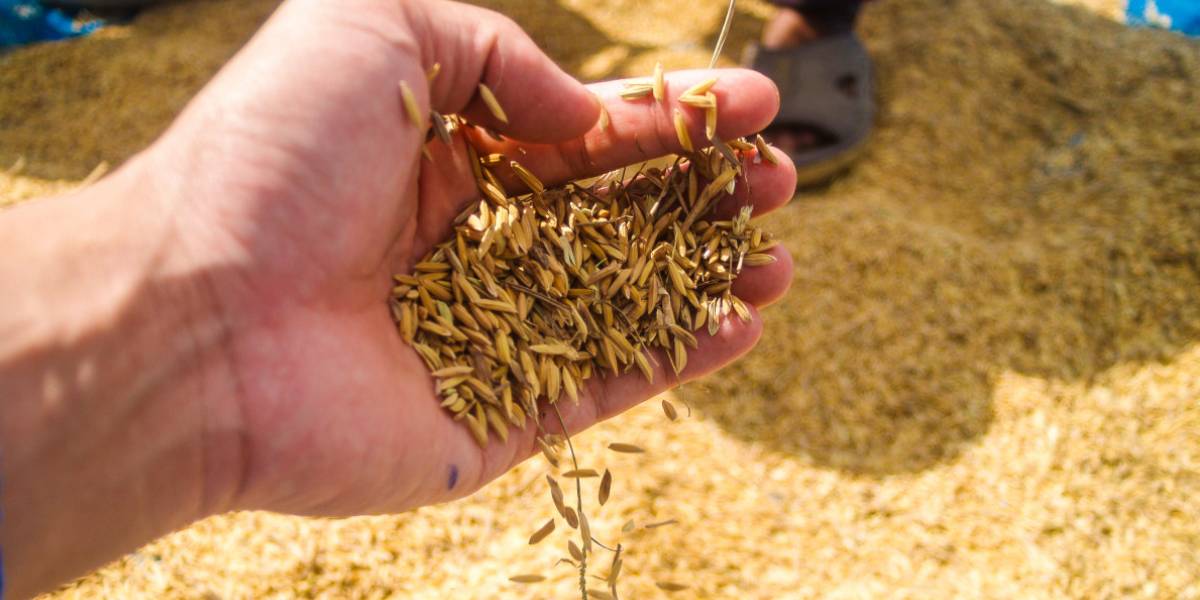Favourable monsoons and expanded cultivation across 67.57 lakh acres have together pushed Telangana’s agricultural output to new heights.
Published Oct 13, 2025 | 8:00 AM ⚊ Updated Oct 13, 2025 | 8:00 AM

To manage the influx, the state’s Civil Supplies Corporation has readied over 7,000 PPCs, introduced digital token systems for hassle-free transactions.
Synopsis: Telangana is set to record its highest-ever paddy production this kharif season, with an estimated 148.3 lakh metric tonnes, driven by favourable monsoons and expanded cultivation across 67.57 lakh acres. The state government has set a procurement target of 80 LMT, but the limited quantity approved by the Union government, nearly full storage facilities, and difficulties in transporting the crop could force farmers to sell at low prices and place a heavy financial burden on the state.
Telangana is on the verge of a historic agricultural milestone, with an estimated 148.3 lakh metric tonnes (LMT) of paddy production this kharif season – the highest ever recorded in the state and among the top yields in the country.
The Civil Supplies Department, which recently finalised the estimate, had earlier projected a bumper harvest but could not quantify the exact output. Its procurement target has now been set at 80 LMT, the highest ever.
Favourable monsoons and expanded cultivation across 67.57 lakh acres have together pushed Telangana’s agricultural output to new heights.
The state’s paddy production has more than doubled since 2019–20, when it stood at 72 LMT, underscoring its transformation into the “rice bowl” of the country.
However, the record-breaking harvest also brings serious challenges: limited central procurement, storage saturation, and logistical hurdles could trigger distress sales if not addressed promptly.
This season’s yield marks a 10–15 percent increase over last year’s 135 LMT, supported by an additional five lakh acres under paddy cultivation.
Of the total area, 40.75 lakh acres are under fine varieties, expected to yield 45–50 LMT, while 26.82 lakh acres of coarse varieties like MTU-7029 may contribute another 30–35 LMT.
Crop-cutting has already begun in northern districts such as Nizamabad, and the first arrivals at Paddy Procurement Centres (PPCs) are expected soon.
At a recent review meeting, Irrigation and Civil Supplies Minister N Uttam Kumar Reddy lauded the achievement.
“Telangana is poised to script history with record paddy production and procurement this kharif. This success reflects our government’s farmer-centric policies and timely water releases,” he said.
To manage the influx, the state’s Civil Supplies Corporation has readied over 7,000 PPCs, introduced digital token systems for hassle-free transactions, and announced a ₹500 per quintal bonus on fine varieties over the Minimum Support Price (MSP) of ₹2,389 per quintal. This could push the total procurement expenditure to between ₹24,000 and ₹26,000 crore.
Despite the optimism, the bumper crop has sharpened friction with the Centre. The Union government has approved procurement of only 53.73 LMT of paddy (equivalent to 36 LMT of rice) for the Kharif Marketing Season 2025–26 – far below Telangana’s target of 80 LMT.
Officials warn that this shortfall could swamp local markets with surplus grain, driving down prices amid weak export demand and global oversupply.
Food Corporation of India (FCI) godowns in Telangana, with a capacity of 22.61 LMT, are already 96 percent full, holding about 21.72 LMT of paddy and custom-milled rice from previous seasons. The logjam has slowed milling operations, idled labourers, and heightened the risk of post-harvest losses.
In response, Uttam Kumar Reddy has urged the Centre to provide 300 additional railway rakes per month to move stocks, lease more godowns, and extend Custom Milled Rice (CMR) delivery deadlines from October 31, 2025, to January 31, 2026.
He has also opposed the directive mandating parboiled rice delivery by November 12, arguing that kharif paddy in Telangana is best suited for raw rice. Already, 7.8 LMT of paddy has been earmarked for raw milling.
In letters to Union Civil Supplies Minister Prahlad Joshi and Food Secretary Sanjeev Chopra dated October 1, Reddy cautioned that failure to enhance procurement would hit farmers hard.
“Without revising the target to 80 LMT, lakhs of farmers may resort to distress sales. Telangana is borrowing at high interest to fund procurement – we urge the Centre to raise allocations to protect growers and national food security,” he wrote.
The Congress government has meanwhile rolled out a series of reforms—Aadhaar-linked e-token systems, direct bank transfers, and improved logistics—to ensure timely payments and transparent transactions. It aims to procure between 75 and 80 LMT by March 2026. Rythu Bharosa Kendras (RBKs) are distributing tarpaulins and conducting awareness campaigns on MSP benefits to prevent exploitation by middlemen.
Yet the critical question remains: will the Centre permit procurement up to 80 LMT or stick to its limit of 53.73 LMT? If it refuses, Telangana could face major financial strain.
The state, which borrows heavily to finance procurement, may be forced to bear the entire cost of unsold grain if the FCI declines to lift the full quantity of rice milled from the 80 LMT of paddy.
The Civil Supplies Minister has already appealed to the Centre for assistance.
(Edited by Dese Gowda)
